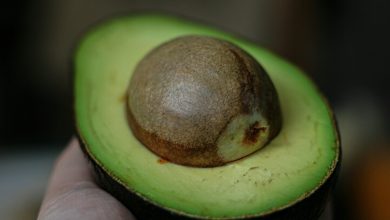Brain releases feel-good serotonin after swallowing “good food”

Researchers have discovered a fascinating new link between the gut and the brain: swallowing nutritious food causes the release of the feel-good chemical serotonin. The findings open the door to developing new treatments for eating disorders.
In recent years, scientists have learned a lot about the important connection between the gut and the brain. Eating is particularly interesting as it involves the nervous system interacting with environmental signals (like how food smells) and physiological and metabolic signals.
Researchers from the University of Bonn, Germany, and the University of Cambridge, UK, recently undertook a study to understand better how the esophagus and the brain are connected during eating – more specifically, what happens between these two organs when food is swallowed.
“We wanted to gain a detailed understanding of how the digestive system communicates with the brain when consuming food,” said the study’s corresponding author, Michael Pankratz, from the Life and Medical Sciences Institute (LIMES) at the University of Bonn. “In order to do this, we had to understand which neurons are involved in the flow of information and how they are triggered.”
Rather than examining the 100 billion-odd neurons in a human brain, the researchers opted for the comparatively far less-crowded body of fruit fly larvae, which contains around 10,000 to 15,000 neurons. They cut whole larvae into thousands of razor-thin slices and scanned the slices using an electron microscope. The scans were used to reconstruct all neurons and target organs of a nerve that connects the nervous system of the larvae’s gastrointestinal tract with the brain.
“We used a high-performance computer to create three-dimensional images from these photographs,” Pankratz said of the process, which enabled the researchers to see how all the nerve cells were connected to one another, synapse for synapse.
They found a kind of ‘stretch receptor’ in the larvae’s esophagus that was wired to a group of six serotonin-producing neurons in the brain. Serotonin is a chemical messenger involved, amongst other biological functions, in controlling mood; it provides a feeling of euphoria. For that reason, it’s sometimes called the ‘feel-good chemical.’ However, the researchers discovered something very interesting about the way these serotonin neurons respond to food that’s been consumed.
“They can detect whether it is food or not and also evaluate its quality,” said Andreas Schoofs, who also works at the LIMES Institute and was the study’s lead author. “They only produce serotonin if good quality food is detected, which in turn ensures that the larva continues to eat.”
Now, by ‘good quality food,’ the researchers mean food that has nutritional value, not that it’s gourmet, which suggests that the neurons perform a sort of quality control on whatever is being swallowed. Food with nutrients is viewed by the brain as a reward, causing the neurons to release serotonin, which makes the larvae feel good and keep eating. Given that it’s a mechanism that is fundamentally important to survival, the researchers think it probably exists in humans, too.
“Despite the differences in the number of cell types as compared with the fly, it would be interesting to see if serotonin also monitors the completion of a biologically meaningful action such as swallowing or other vital activities in mammals,” said the researchers.
If the esophagus-brain circuit does exist in humans, it could be a way of treating eating disorders such as anorexia or binge eating. That’s a way off, though.
“[W]e don’t know enough at this stage about how the control circuit in humans actually works,” said Pankratz. “There is still years of research required in this area.”
The study was published in the journal Current Biology.




